How to get rid of the shield. Classification and photo of the pest
Unfortunately, the life of a gardener is sometimes greatly overshadowed by the appearance of pests on plants. They are quite insidious: some are difficult to notice and recognize in time, while others are very difficult to fight. Such a pest is a scale insect. In order to immediately help green friends, you should get to know this enemy better. What is a shield, the photo will show close-up.
Scale insect or shield aphid (Diaspididae) - sucking pests of the Homoptera family, suborder Coccidae. Depending on the species, an adult insect has a size of 0.5 to 5 mm, its body is covered with a kind of wax shell-shield (hence the name), which serves as a reliable protection.
Individuals of different sexes are very different from each other (sexual dimorphism). Females have neither legs nor wings, sometimes they are even devoid of eyes. Their shell is more convex and rounded. Males are slightly smaller, have a pair of wings, normal limbs, a flat, slightly elongated carapace, and reduced (simplified, underdeveloped) mouthparts. After mating, the males die. Females are less common than males and are completely immobile.
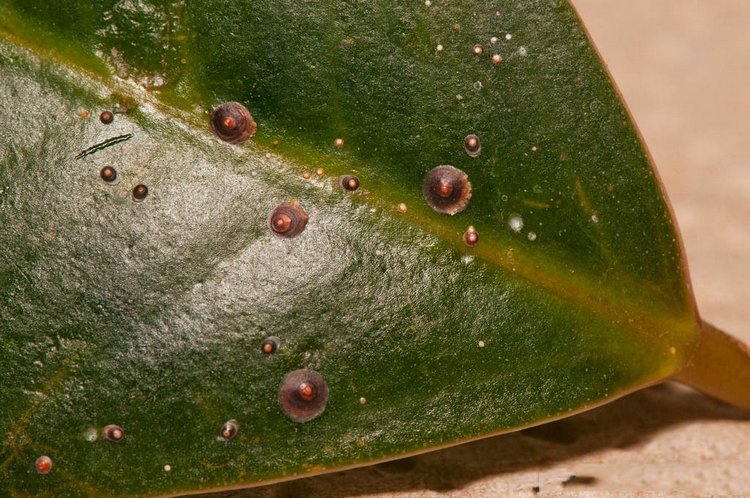
Shield or shield aphid
In most species of scale insects, females lay eggs, but there are also viviparous specimens (for example, the California scale insect). The eggs hatch into larvae, which are very active at first. Having chosen a suitable place and attached to the plant, the larvae become immobile. Gradually molting, they are covered with a shield of discarded skins and waxy secretions. Shields are rounded or more oblong, brown, brown or white.
Shields are very similar to false shields. The difference is that the false scales do not have a wax shell, and the role of the shield is performed by the skin of the female dying during molting. Drying, it rises above the body, creating protection for the insect and the eggs being laid. Therefore, the shield of false shields is more convex (looks like half a pea) and slightly larger in size (up to 7 mm).
A funny mole from a cartoon or a businesslike one from a fairy tale about Thumbelina actually turns out to be not at all so ...
Types of scale insects
There are many types of scale insects (more than 2400), so the list of indoor, greenhouse and open ground plants affected by them is also diverse. We note only a few species of these insects that harm plants in the open field.
Such scale insects as purple (Pariatoria oleae Colvee), yellow pear (Quadraspidiotus pyri Licht), red pear (Epidiaspis leperii Sign), comma-shaped (Lepidosaphes ulmi L.) and others harm garden trees, and bushes suffer from rose (Aulacaspis rosae Bouche) roses and blackberries.
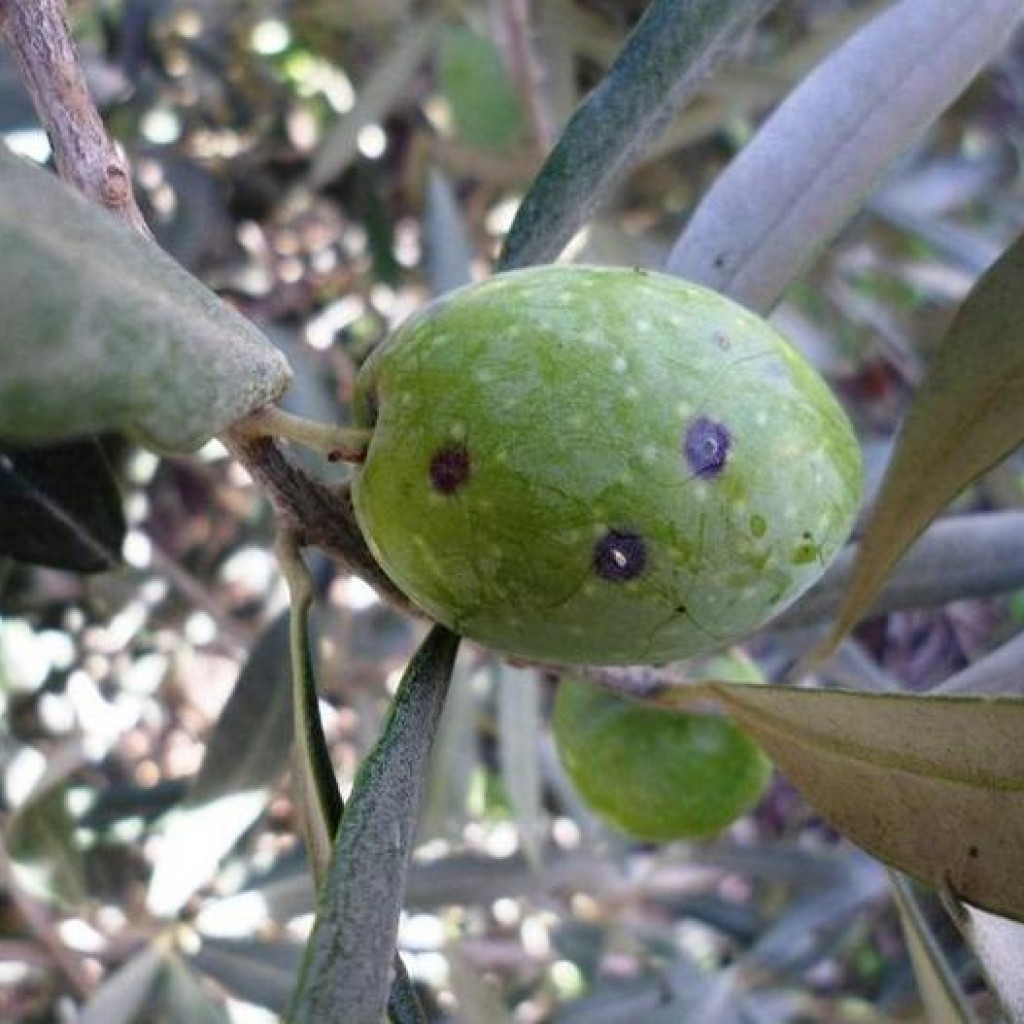 purple scale insect
purple scale insect 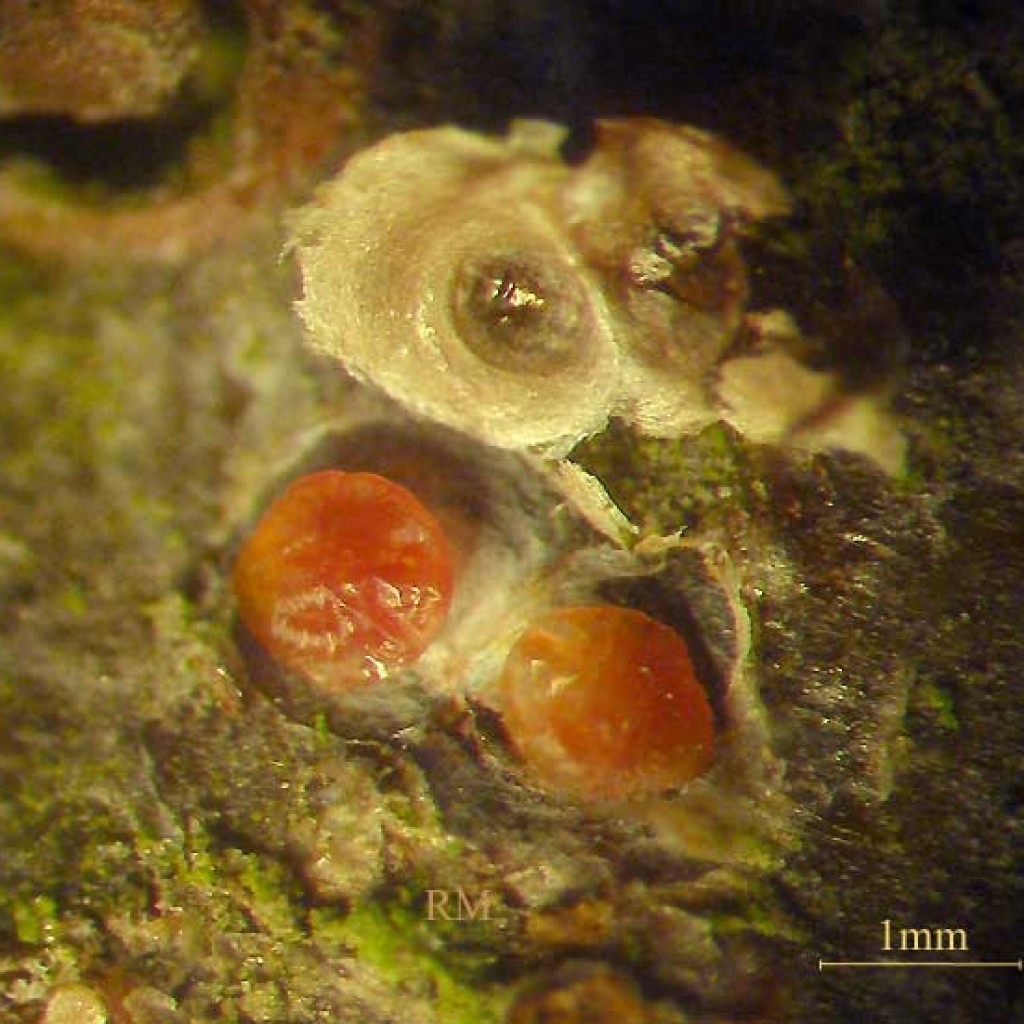 Red pear scale
Red pear scale 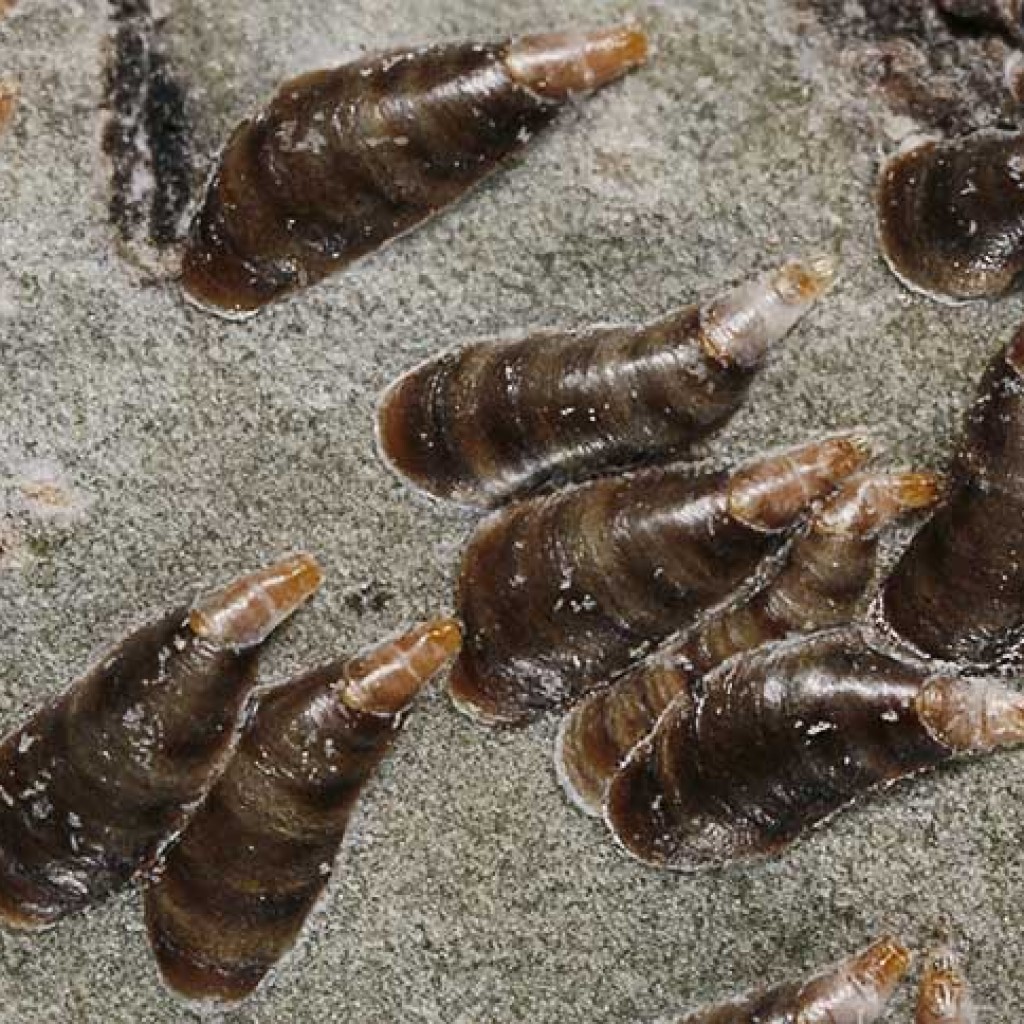 comma-shaped scab
comma-shaped scab 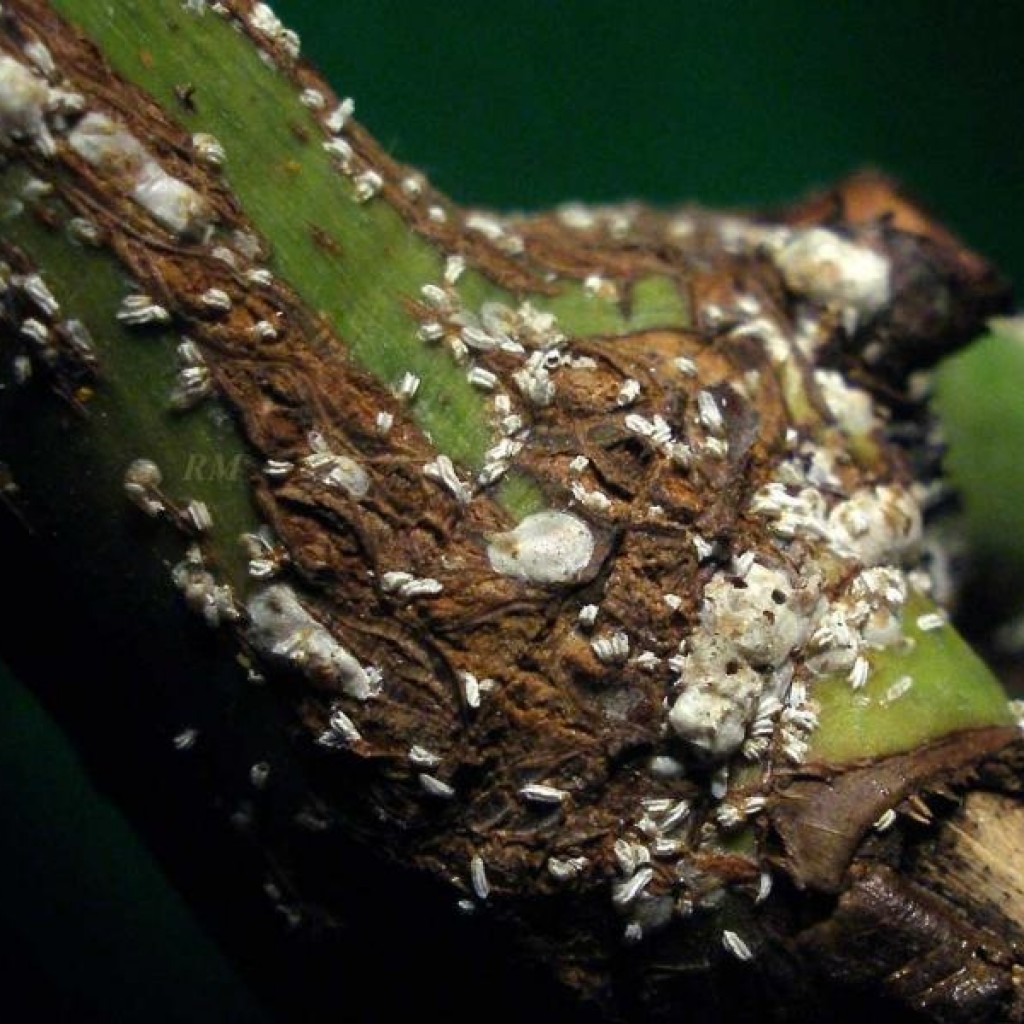 rose scale
rose scale
Willow (Chionaspis salicis), poplar (Quadraspidiotus gigas Thiem et Gem), euonymus (Unaspis evonymi Comst) and others affect ornamental trees and shrubs.
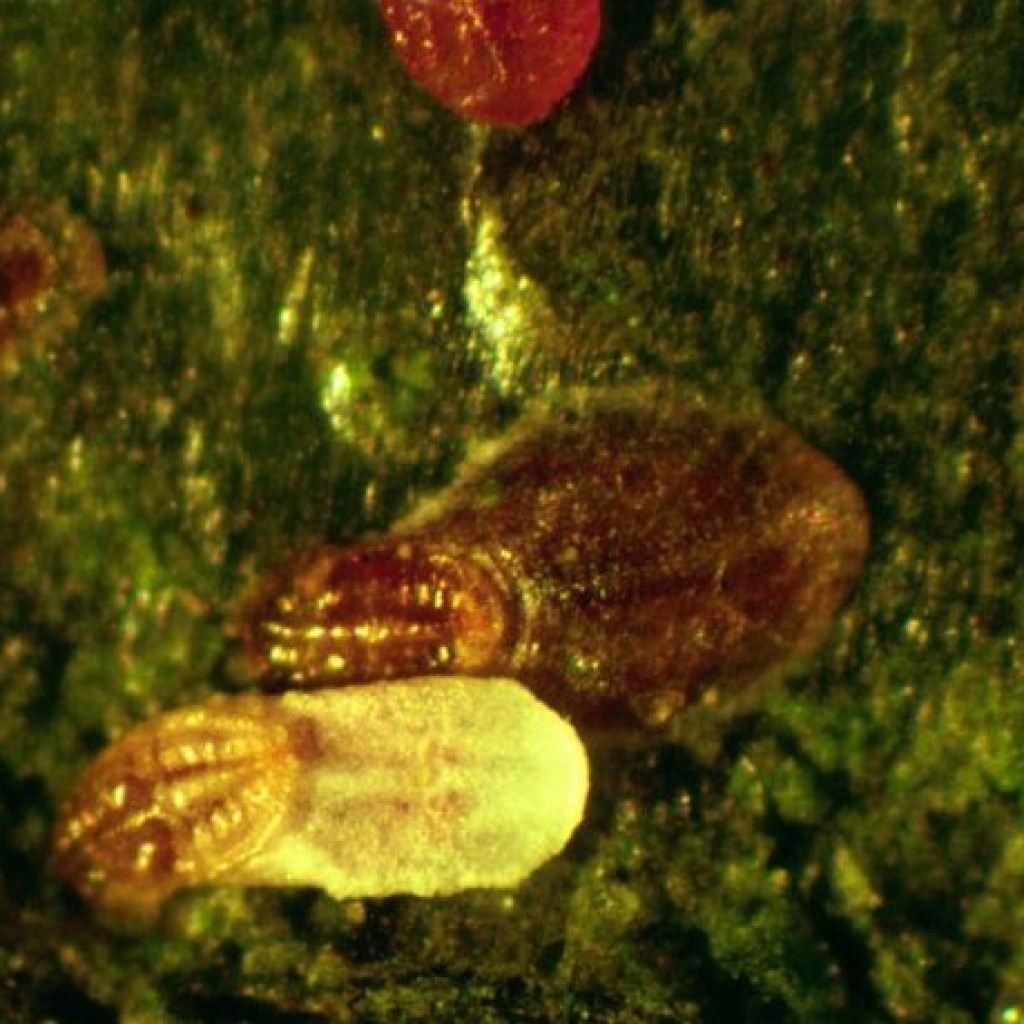 willow shield
willow shield 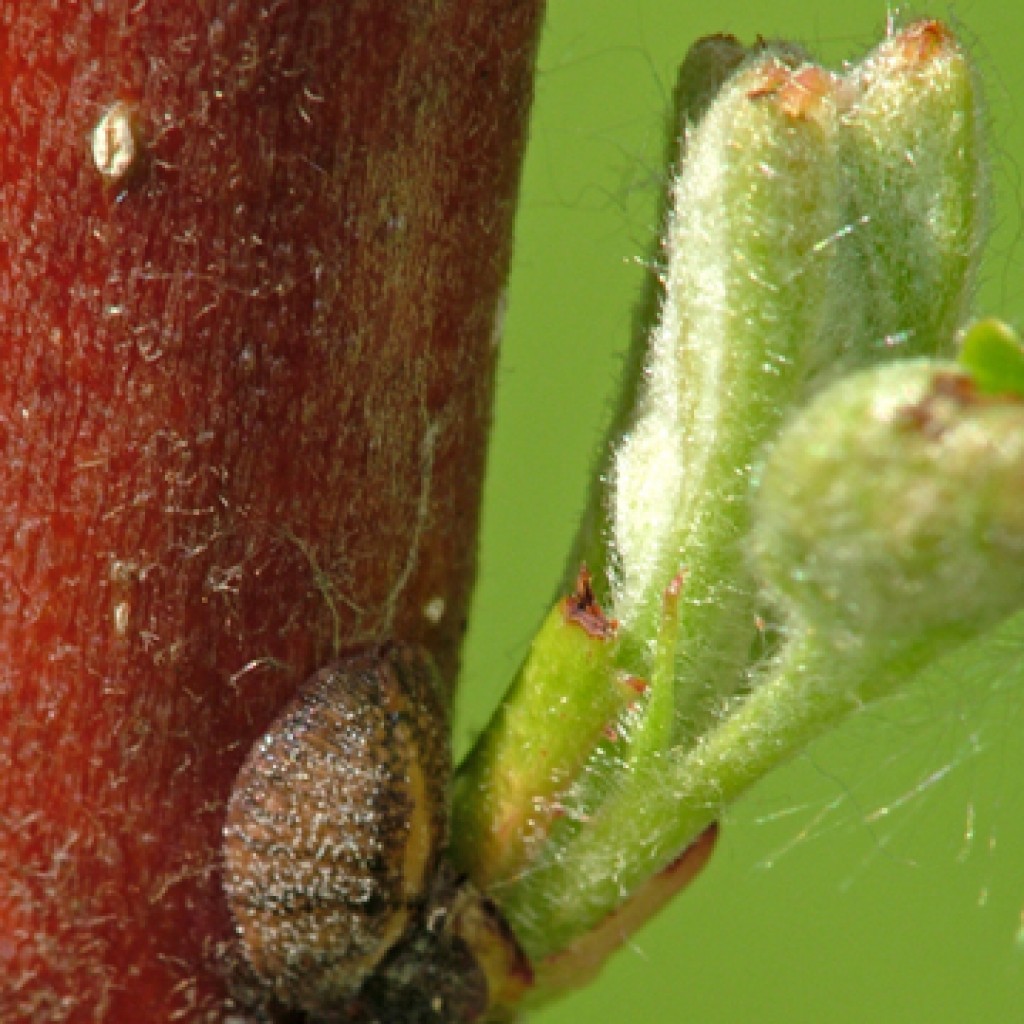 Euonymus shield
Euonymus shield
Coniferous plants are attacked by fir scale insects (Syngenaspis pariatoriae Sulc), pine scale insects (Leucaspis pusilla Loew), spruce scale insects (Nuculaspis abietis Schr) and others.
But the most common and dangerous are the Californian and mulberry scale insects, which are classified as quarantine pests.
California scale insect(Quadraspidiotus perniciosus) - is ubiquitous and can be safely called an omnivore, as it damages about 200 plant species. The scutes of females of this species are round, colored to match the color of the bark (dark gray, sometimes with a brownish tinge), up to 2 mm in size. The body is flat lemon-colored. In males, the scutes are oval, up to 1 mm in size, gray in color (from light to almost black) with a yellowish tint. The body of an adult male is light orange, with one pair of wings, with antennae and limbs, about 0.85 mm long. Young larvae ("tramps") are light yellow, while mature larvae are similar to females.
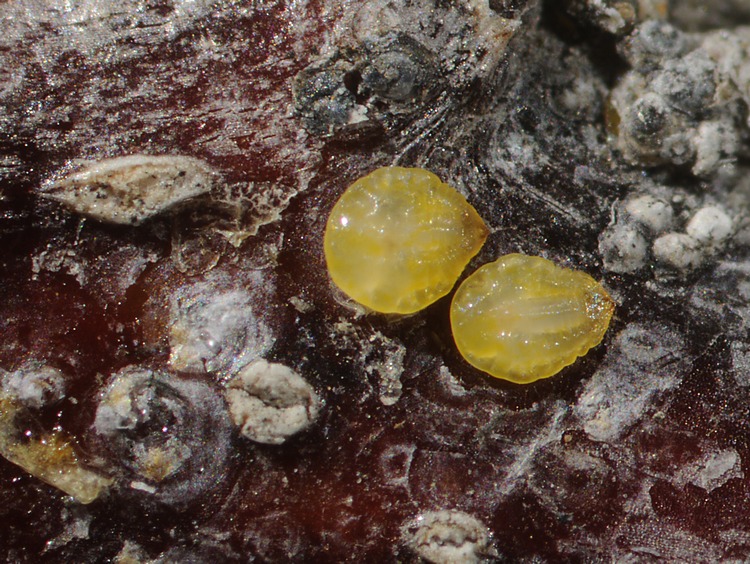
California scale insect
The warmer the climate, the more generations of California scale insects develop in one year (from 1 to 4). The larvae hibernate on trunks and branches under shields, withstand frosts down to -30 degrees, and some even down to -40. In mild climates, some young females may also overwinter.
Together with the spring awakening of plants, the larvae come out of hibernation and begin to feed intensively, and by the beginning of May, only adult females are on the trees. By this time, the years of males begin and mating occurs. The California scale insect is a viviparous insect. In the first half of June they give birth to larvae (about 100), then the female dies. The larvae crawl to find a place to feed. Most often they stick near the kidneys, in the cracks of the bark and begin to develop. In July, young mature insects appear. The full development cycle of this scale insect is approximately 30 days.
mulberry scale insect(Pseudaulacaspis pentagona) - has a wide distribution area. It is polyphagous (polyphagous), in its "menu" there are many fruit and ornamental trees and shrubs, it can even damage some vegetable crops - eggplant, pumpkin, fodder beet, carrots.
The scutellum of the female is on average about 2 mm, white, sometimes gray-white in color, rounded in shape. The body is yellow or light orange. The male shield is oblong, white in color with a pair of longitudinal grooves. An adult male has a body of about 1 mm bright yellow, always with a pair of wings, legs and antennae.
The eggs are white (may have a creamy or yellowish tinge) and yellow (with a pink or orange tinge). Males emerge from white eggs, and females emerge from yellow ones. Accordingly, the larvae of males are also white, and females are orange.
Fertilized females overwinter at the mulberry shield. In the spring, when the air temperature reaches about 10 degrees, they lay eggs that develop under the shield of the female. Motile larvae appear in early May. Having chosen a suitable place, they stick, gradually form a shield and begin to develop. By the end of June, a new generation of adult females is already ready. In August, the oviposition of the third generation of scale insects occurs, from which adults are already obtained in October. Mating takes place and the females leave for the winter.
What does an affected plant look like?
The first sign that your plant is infected with a scale insect will be the presence of a sticky, syrup-like coating on the leaves. These secretions are called honeydew or honeydew. They are formed as a result of the vital activity of sucking insect pests. Soot fungus actively develops in these secretions, which causes serious damage to plants.
After examining your "green friend", you will also notice gray-brown or off-white plaques on the trunk, branches, lower part of the leaf. These are females and adult larvae that suck the juice from the plant.
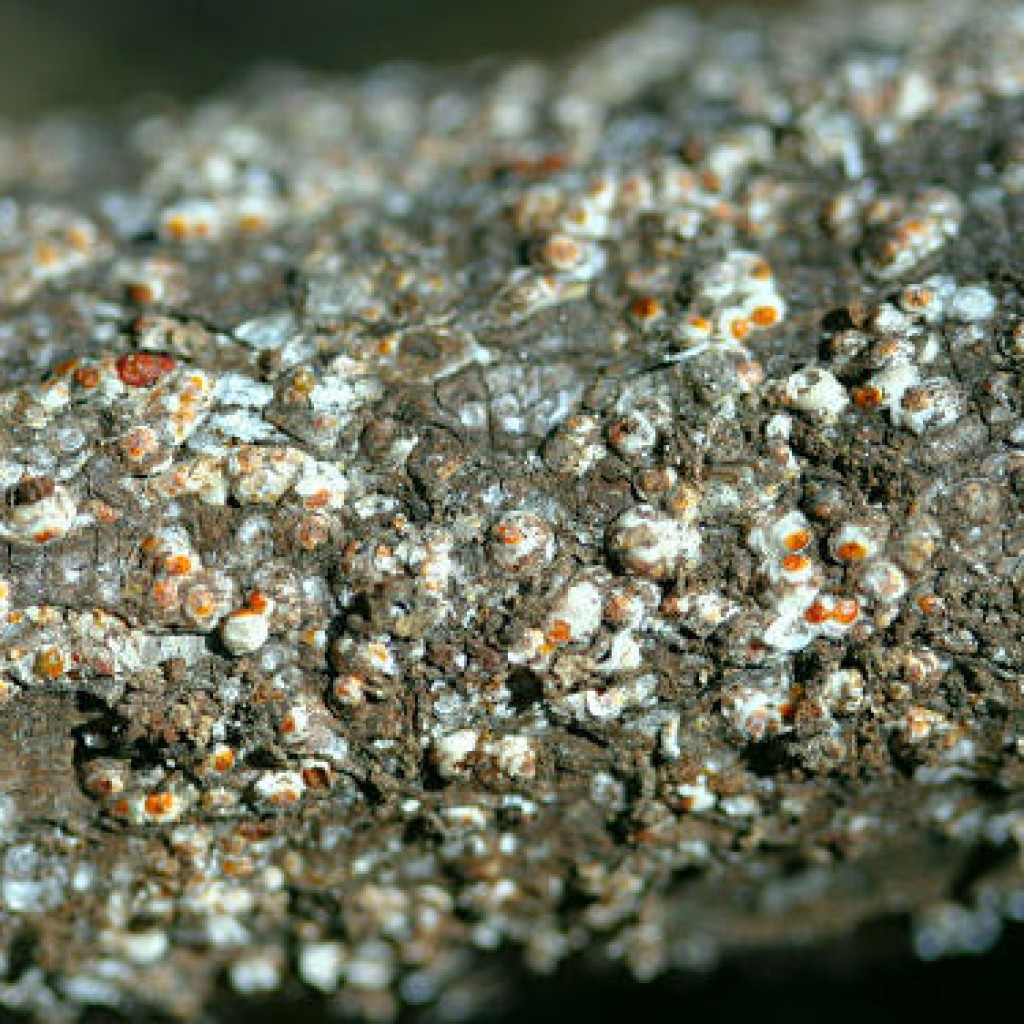 Pad or honeydew
Pad or honeydew 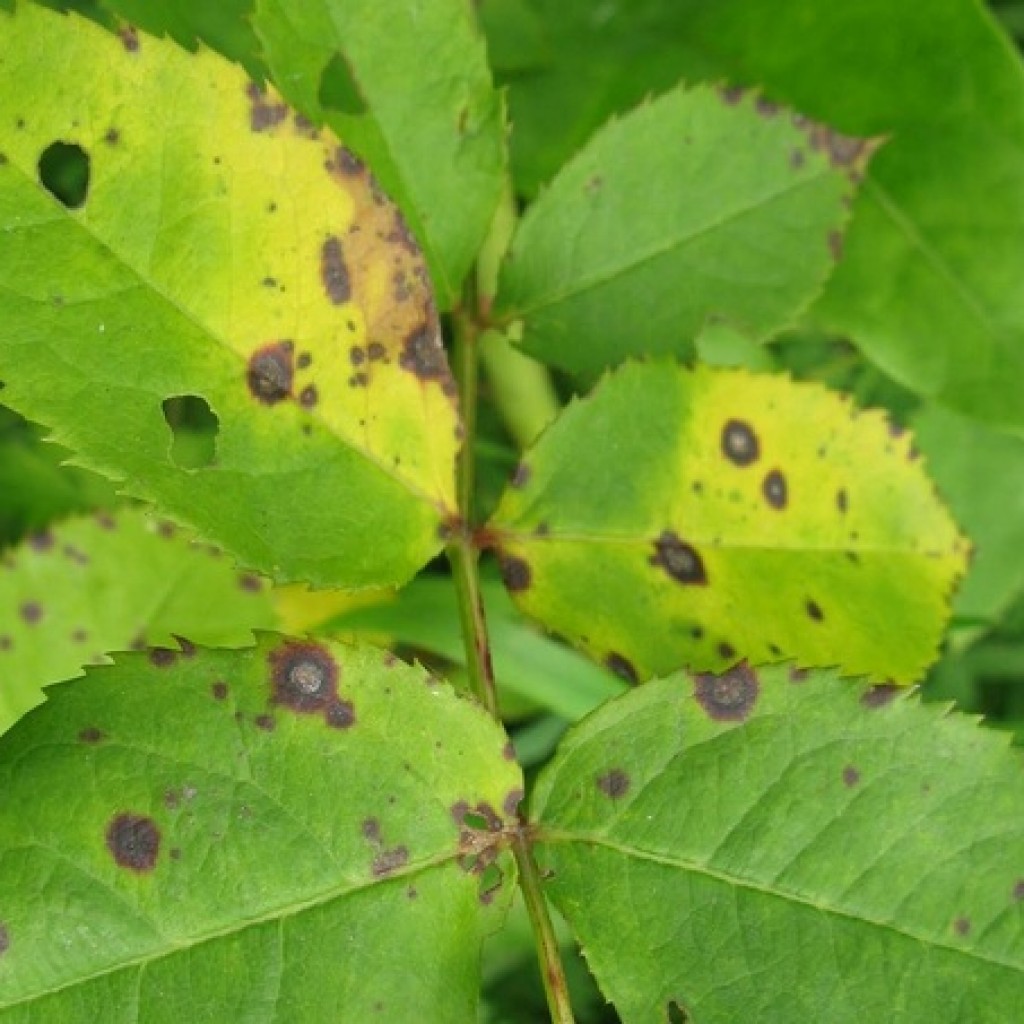
For example, the California scale insect (like many other species of scale insects) in the first year after infection leads to the growth of new tissues in the damaged areas. Therefore, tuberosity and unevenness of the cortex is formed. Affected leaves first turn red, then deform and fall off. In the second year of infection, large colonies of scale insects are already formed, the growth and development of the plant slows down, some branches die. In the third year, mass drying of branches and leaves begins, the bark cracks.
And the mulberry scale, sucking out the juice, weakens the plant, the fruits become smaller, the yield decreases, they lose their presentation, spots appear.
Sometimes the accumulation of scale insects is so large that they can be mistaken for growths on the bark. Young plants suffer the most, since they have little strength to fight the pest, they often die.
Unfortunately, scale plaques are not always immediately noticeable, and when the infection becomes noticeable, it is already quite difficult to fight.
The main description of the pest May beetles, they are also May beetles - insects of the order Coleoptera, family ...
Causes of infection and prevention
Most often, the scale insect enters the garden with infected planting or grafting material. The larvae can be carried by birds, and the mulberry scale insect can even be carried by the wind.
Therefore, when buying young seedlings or cuttings for grafting, carefully inspect them. And in the future, conduct a systematic examination of the garden, pay attention to changes in the appearance of plants. For example, if there are red dots on the fruits, then it needs to be urgently examined, a California scale insect may be found.
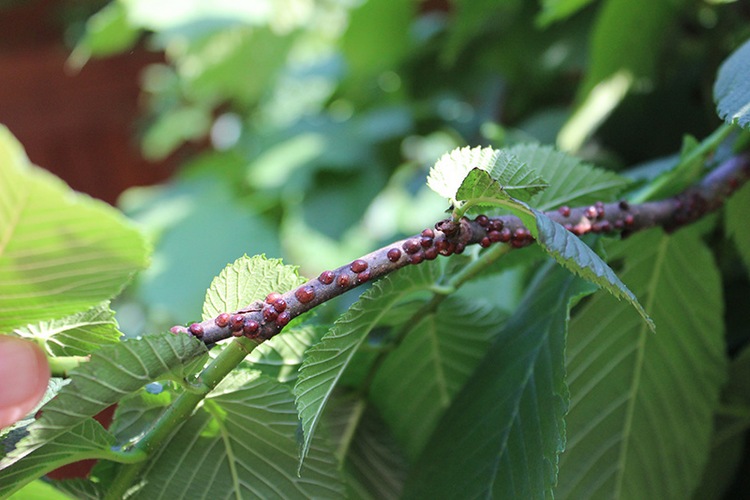
The main preventive measures are:
- crown thinning:
- timely removal of dried and damaged branches, dead trees, root shoots;
- cleansing on trunks and skeletal branches of damaged and lagging bark;
- proper watering and application of the necessary fertilizers, as a strong plant is more resistant to pest attack.
Pest control measures
It is difficult to deal with the scale insect, since it multiplies quite quickly, and the shield-shell protects it from the effects of pesticides. All applied methods of struggle can be divided into groups.
- Mechanical. At an early stage of infection, or if the plant is small, the affected shoots or branches should be removed (with their subsequent burning). You can try to wipe the insects from the leaves with a soapy sponge or a swab dipped in alcohol.
- Folk. In the fight against scabies, folk remedies do not give good results. You can try spraying with a mixture of machine oil and soapy water (1:10), the procedure should be carried out at least three times every 10 days. Various herbal infusions are also used: onion, garlic, pepper, fern, tobacco, celandine, walnut. Effective against young larvae (tramps) is a mixture of 1% coniferous concentrate with 0.5% laundry soap and 0.2% salt solution.
- Biological. Entomophages (for example, blastotrix and others) can be used against scale insects. Particularly sensitive to biological agents are the mulberry scale and false scales. Also, biological methods include fungicides based on fungi (avertin, aversectin) and pathogenic nematodes (nemabact). These drugs can be successfully used in the fight against the California scab.
- Chemical. Unfortunately, one cannot cope with such an insidious pest as a scale insect without pesticides. But even when using potent insecticides, it is necessary to take into account the development cycle of these insects. Since the shell is a fairly good defense, the most vulnerable are young vagrant larvae.
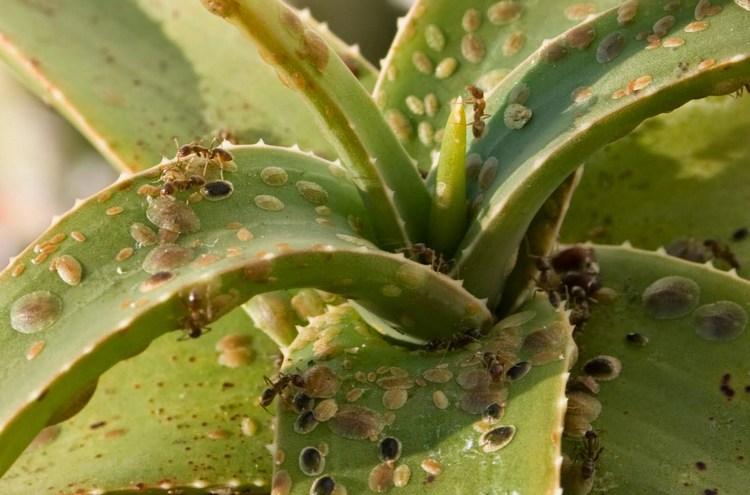
The first stage of the struggle should be carried out in early spring (before bud break). This will help to get rid of wintering larvae. During this period, the plants are sprayed with nitrofen, karbofos, preparation No. 30, oleocuprite, bottom.
When spraying with oily emulsions, a film is formed that deprives the shield of air access, and also, flowing under the shield, poisons the insect.
In case of severe infection, the plant should be sprayed again immediately after flowering with karbofos, actellik, rovikurt or rogor. Actara gives good results, they can be sprayed with the plant itself and the soil under it. In June, the treatment should be repeated, since at this time the California scale insect gives larvae of the second generation. And when infected with a mulberry scab, treatment should be carried out in September.
The dosage of pesticides is always indicated on the packaging and must be observed. And since they are all quite toxic, do not forget about caution and personal protective equipment.
Shchitovka is a very insidious enemy, the fight against it is always long and difficult. But now you know how to get rid of scale insects in the garden. By treating the plants correctly and in a timely manner, you will cope with 90% of these pests. And then be patient, arm yourself with our advice and do not give up. You are sure to be a winner!




